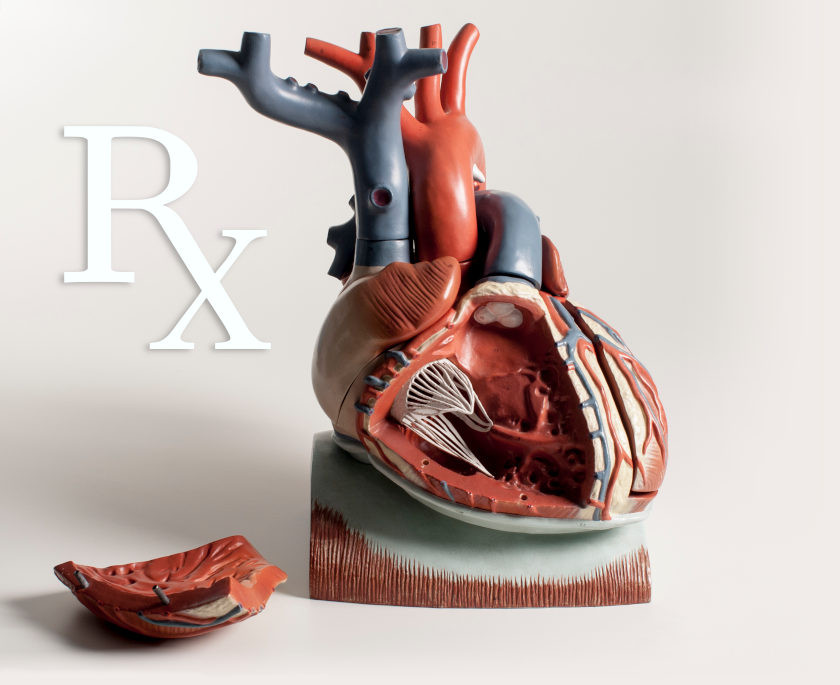Guided Learning - Pharmacologic Treatment of Arrhythmias
(NOTE: Turn off or override browser pop-up blockers.)
Normal Electrophysiology
- What is the primary pacemaker site within the heart? click here
- What are the names of the different phases of action potentials in nodal and non-nodal cardiac tissue? click here
- How do nodal and non-nodal tissue differ regarding the role of different ions in the generation of action potentials? click here
- What effects do blocking sodium, potassium and calcium ion conductances have on action potentials in nodal and non-nodal cardiac tissue? click here
- What is the effective refractory period (ERP) for cardiac action potentials, and what can cause it to lengthen or shorten? click here
- How do changes in sympathetic and vagal nerve activity alter ion conductances and action potentials in the sinoatrial node? click here
- What are the pathways by which action potentials are normally conducted within the heart? click here
- How do autonomic nerves, circulating catecholamines and cellular hypoxia affect conduction velocity within the heart? click here
Arrhythmias and their Pathogenesis
- Define each of the following arrhythmias: click here
- sinus rhythm
- sinus bradycardia
- sinus tachycardia
- sick sinus syndrome
- atrial tachycardia
- atrial flutter
- atrial fibrillation
- junctional escape rhythm
- AV nodal blocks – first, second, and third degree
- supraventricular tachycardia
- ventricular premature beat
- ventricular tachycardia and ventricular flutter
- ventricular fibrillation
- How can altered automaticity and conduction cause arrhythmias? click here
- What are early- and delayed-afterdepolarizations and what can cause them? click here
- What are ectopic foci? click here
- Under what conditions and by what mechanisms can a non-pacemaker cell transform into a pacemaker cell? click here
- What are reentry currents? How can they lead to tachyarrhythmias, and how can changes in conduction velocity and the effective refractory period precipitate reentry currents? click here
Antiarrhythmic Drugs
- How does changing the slope of phase 4 of pacemaker action potentials alter the firing rate? click here
- How does changing the slope of phase 0 of action potentials alter conduction velocity? click here
- How does changing the duration of phase 3 affect the effective refractory period? click here
- How can changing conduction velocity and the effective refractory period abolish reentry tachyarrhythmias? click here
- What is the Vaughan-Williams classification scheme? click here
- What are the primary and secondary antiarrhythmic mechanisms for each of the following classes of antiarrhythmic drugs?
- How do Class IA, IB, and IC drugs differ in their direct and indirect effects on non-nodal action potentials? click here
- How do Class IA, IB, and IC drugs alter conduction velocity within the heart? click here
- Class IA, IB and IC drugs are used for which types of arrhythmias? click here
- What are some side effects and contraindications for Class IA, IB, and IC drugs? click here
- What is the primary mechanism by which Class II drugs suppress arrhythmias? click here
- Class II drugs are used to treat which types of arrhythmias? click here
- Which Class II drugs are selective and which are non-selective beta-blockers? click here
- What is intrinsic sympathomimetic activity and membrane stabilizing activity, and how do these properties affect the antiarrhythmic properties of Class II drugs? click here
- What are some side effects and contraindications for Class II drugs? click here
- What is the primary mechanism by which Class III drugs suppress arrhythmias? click here
- Class III drugs are used to treat which types of arrhythmias? click here
- What are some side effects and contraindications of Class III drugs? click here
- What is the primary mechanism by which Class IV drugs suppress arrhythmias? click here
- How do verapamil and diltiazem differ from dihydropyridine calcium-channel blockers in terms of cardiac selectivity? click here
- Class IV drugs are used to treat which types of arrhythmias? click here
- What are some side effects and contraindications of Class IV drugs? click here
- Describe the pharmacology for each of the following drugs and how they are used in the treatment of arrhythmias:
- adenosine
- magnesium and potassium salts
- digoxin (cardiac glycoside)
- atropine (muscarinic receptor antagonist)
- Which drugs are used to treat the following arrhythmias? click here
- Sinus tachycardia
- Atrial fibrillation/flutter
- Paroxysmal supraventricular tachycardia
- AV block
- Ventricular tachycardia
- Premature ventricular complexes
- Digitalis toxicity
Revised 10/28/2023

 Cardiovascular Physiology Concepts, 3rd edition textbook, Published by Wolters Kluwer (2021)
Cardiovascular Physiology Concepts, 3rd edition textbook, Published by Wolters Kluwer (2021) Normal and Abnormal Blood Pressure, published by Richard E. Klabunde (2013)
Normal and Abnormal Blood Pressure, published by Richard E. Klabunde (2013)